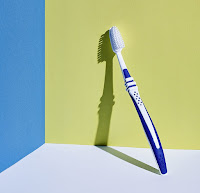The Process of Getting a Dental Crown: What to Expect

Dental crowns are a popular restorative treatment designed to repair and protect damaged teeth. Whether you’re getting a crown to cover a cracked tooth, support a tooth with a large filling, or improve the appearance of a discolored or misshapen tooth, understanding the process can help ease any anxiety. This blog will walk you through each step of getting a dental crown, from the initial consultation to the final placement.
Initial Consultation and Examination
The journey to getting a dental crown begins with a thorough consultation and examination. During this visit, your dentist will:
- Evaluate Your Dental Health: The dentist will examine your tooth and surrounding tissue. X-rays may be taken to assess the root and bone structure supporting the tooth.
- Discuss Treatment Options: If a crown is deemed necessary, your dentist will discuss the different types of crowns available (ceramic, porcelain-fused-to-metal, gold alloys, base metal alloys, zirconia) and help you choose the best one for your needs.
- Create a Treatment Plan: Once a decision is made, the dentist will explain the process, the timeline, and any necessary pre-treatment steps.
Tooth Preparation
The next step involves preparing the affected tooth for the crown. This process usually takes place during the first appointment and includes the following:
- Numbing the Tooth: A local anesthetic is applied to numb the tooth and surrounding area, ensuring you remain comfortable throughout the procedure.
- Removing Decay and Shaping the Tooth: The dentist will remove any decay and shape the tooth to make room for the crown. This involves trimming down the tooth's top and sides to accommodate the crown’s thickness.
- Building Up the Tooth (if needed): If the tooth is severely decayed or damaged, the dentist may need to build it up with filling material to provide a stable base for the crown.
Taking Impressions
After the tooth is prepared, your dentist will take impressions to create a custom crown:
- Digital or Physical Impressions: Impressions of the prepared tooth and the surrounding teeth are taken using a putty-like material or a digital scanner. These impressions are crucial for ensuring the crown fits perfectly and matches your bite.
- Choosing the Shade: For crowns that will be visible when you smile, the dentist will select a shade that matches your natural teeth to ensure a seamless appearance.
Placing a Temporary Crown
While your permanent crown is being fabricated in a dental laboratory, which typically takes 1-2 weeks, a temporary crown will be placed:
- Creating the Temporary Crown: The dentist will make a temporary crown from acrylic or composite material.
- Securing the Temporary Crown: The temporary crown is cemented in place using temporary adhesive. This crown protects the prepared tooth and maintains its function until the permanent crown is ready.
Fitting the Permanent Crown
Once your permanent crown is ready, you’ll return to the dentist for the final placement. This visit involves several critical steps:
- Removing the Temporary Crown: The dentist will carefully remove the temporary crown, cleaning any remaining adhesive from the tooth.
- Checking the Fit and Color: The permanent crown is placed on the tooth to check its fit, color, and alignment. Adjustments are made as needed to ensure a perfect match.
- Cementing the Crown: Once satisfied with the fit and appearance, the dentist will permanently cement the crown in place. Excess cement is removed, and the dentist will check your bite to ensure the crown is comfortable and functional.
Final Adjustments and Aftercare
After the permanent crown is placed, the dentist will provide instructions for care and maintenance:
- Checking for Comfort: You’ll be asked to bite down and move your jaw to ensure the crown feels comfortable and doesn’t interfere with your bite.
- Final Polishing: The dentist may polish the crown to ensure a smooth finish that blends seamlessly with your natural teeth.
- Post-Procedure Care: Instructions will include how to care for your new crown, which typically involves maintaining good oral hygiene, avoiding hard foods, and attending regular dental check-ups.
Tips for Maintaining Your Dental Crown
To ensure your dental crown lasts as long as possible, follow these tips:
- Good Oral Hygiene: Brush your teeth twice a day and floss daily to keep the crowned tooth and surrounding teeth healthy.
- Avoid Hard and Sticky Foods: These can damage the crown or cause it to become dislodged.
- Regular Dental Visits: Schedule regular check-ups with your dentist to monitor the condition of your crown and address any issues early.
- Address Bruxism: If you grind or clench your teeth, consider using a night guard to protect your crown and natural teeth from excessive wear.
Conclusion
Getting a dental crown is a common and effective solution for restoring damaged teeth. Understanding the process, from the initial consultation to the final placement, can help you feel more confident and prepared. With proper care and maintenance, your dental crown can provide long-lasting functionality and aesthetics, contributing to a healthier, more beautiful smile.
.jpg)
.jpg)

Comments
Post a Comment